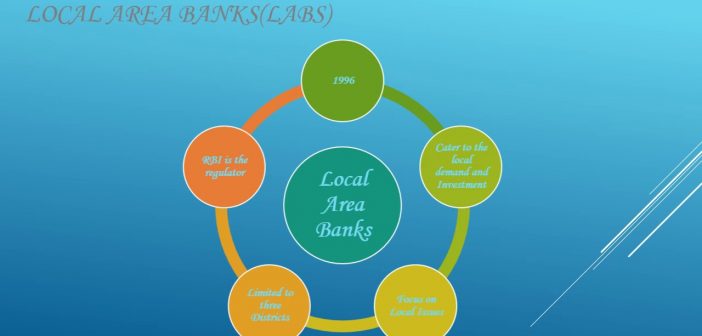India’s banking sector boasts a diverse array of institutions, catering to a vast population with varying financial needs. While behemoths like State Bank of India and HDFC Bank dominate the landscape with extensive branch networks, a lesser-known category exists – Local Area Banks (LABs). Established with the specific aim of promoting financial inclusion in rural and semi-urban areas, LABs offer a unique banking experience characterized by a local focus and personalized approach.
A Brief History: The Rise and Evolution of LABs
The concept of LABs emerged in India’s 1996 Union Budget, aiming to bridge the gap in financial services faced by underserved communities. These banks were envisioned as small, private sector institutions operating within a limited geographic area, typically comprising three contiguous districts. The Reserve Bank of India (RBI) issued guidelines for setting up LABs, requiring a minimum paid-up capital of Rs. 5 crore, with a 25% contribution from the promoter group and the remaining sourced from the public.
While the initial years saw the licensing of several LABs, the scheme faced challenges, including limited capital base, intense competition from larger banks, and difficulties in achieving profitability. As of 2024, only a handful of LABs continue to function, primarily concentrated in specific regions.
The Existing Landscape: Unveiling the Active LABs
Here’s a glimpse into some of the LABs currently operating in India (information accurate as of March 2024):
-
Coastal Local Area Bank Ltd. (CLAB): Established in 1999, CLAB is headquartered in Vijayawada, Andhra Pradesh. Its area of operation encompasses the contiguous districts of Krishna, Guntur, and Nalgonda. CLAB focuses on providing microloans, small and medium enterprise (SME) financing, deposit accounts, and other financial services to individuals and businesses within its designated region.
-
Krishna Bhima Samruddhi Local Area Bank Ltd. (KBSLAB): Headquartered in Hyderabad, Telangana, KBSLAB was established in 1999. Its area of operation covers the three districts of Ranga Reddy, Medchal-Malkajgiri, and Hyderabad. KBSLAB caters to the financial needs of individuals, farmers, small businesses, and self-employed professionals within its service area.
-
Capital Local Area Bank Ltd. (CLAB): Established in 1997, CLAB is headquartered in Jalandhar, Punjab. Its operational area encompasses the districts of Jalandhar, Kapurthala, and Nawanshahr. CLAB offers a range of financial products, including savings accounts, fixed deposits, loan products for agriculture, small businesses, and personal needs.
Beyond Names and Numbers: Understanding the Role of LABs
LABs play a crucial role in promoting financial inclusion in rural and semi-urban areas by offering several advantages:
- Local Focus: Their limited geographic area allows LABs to develop a deep understanding of the local economy, the needs of the population, and the specific challenges faced by businesses and individuals.
- Personalized Service: With a smaller client base, LABs can build closer relationships with their customers, offering more personalized financial advice and solutions tailored to their specific needs.
- Focus on Underbanked Segments: LABs can play a vital role in reaching out to previously unbanked or underbanked segments of the population, encouraging saving habits, and providing access to credit facilities.
- Supporting Local Businesses: By offering SME financing and other financial services, LABs can contribute to the growth and development of local businesses within their operational areas.
Challenges and the Road Ahead: The Future of LABs
Despite their potential benefits, LABs face some challenges that need to be addressed to ensure their long-term sustainability:
- Limited Capital Base: The requirement of a minimum capital of Rs. 5 crore might restrict the entry of new players and hinder LABs’ ability to expand their operations.
- Competition: With larger banks increasingly focusing on financial inclusion initiatives, LABs face competition in attracting customers and offering competitive financial products.
- Profitability: Maintaining a balance between providing financial services to underserved communities and achieving profitability remains a challenge for LABs.
However, the future of LABs holds promise with several potential opportunities:
- Leveraging Technology: By embracing digital banking solutions, LABs can expand their reach and offer a wider range of financial services remotely, overcoming the limitations of a restricted physical branch network.
- Focus on Niche Products: Developing expertise in specific financial products tailored to the needs of their local clientele can help LABs differentiate themselves from larger banks.
- Collaborations and Partnerships: Collaborating with other financial institutions, government
schemes, or NGOs can provide LABs with access to additional resources, expertise, and a wider customer base.
Conclusion: A Model for Financial Inclusion?
The story of LABs in India serves as a case study in the pursuit of financial inclusion. While the initial vision faced challenges, the remaining LABs continue to play a vital role in serving niche communities and offering a personalized banking experience. By embracing technological advancements, focusing on niche offerings, and forging strategic partnerships, LABs can ensure their continued relevance and contribute significantly to India’s journey towards a more inclusive financial landscape.
The future of LABs hinges on their ability to adapt to the evolving financial ecosystem. Whether they can carve a distinct niche and thrive in the face of competition remains to be seen. However, their dedication to local communities and personalized service offers a valuable alternative to the standardized models of larger banks. LABs serve as a reminder that financial inclusion isn’t just about numbers and reach, but also about building trust, understanding local needs, and fostering financial empowerment at the grassroots level.




